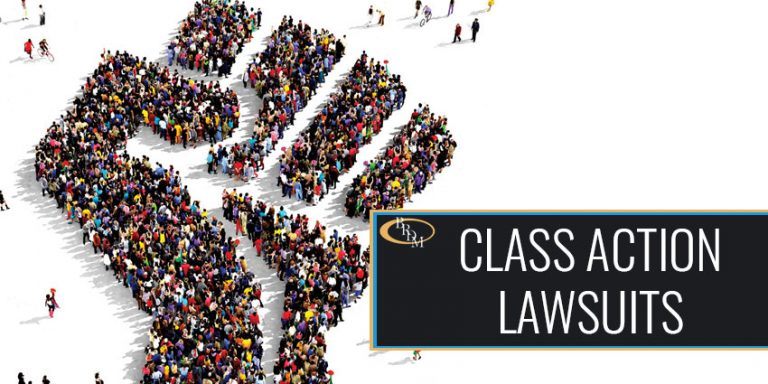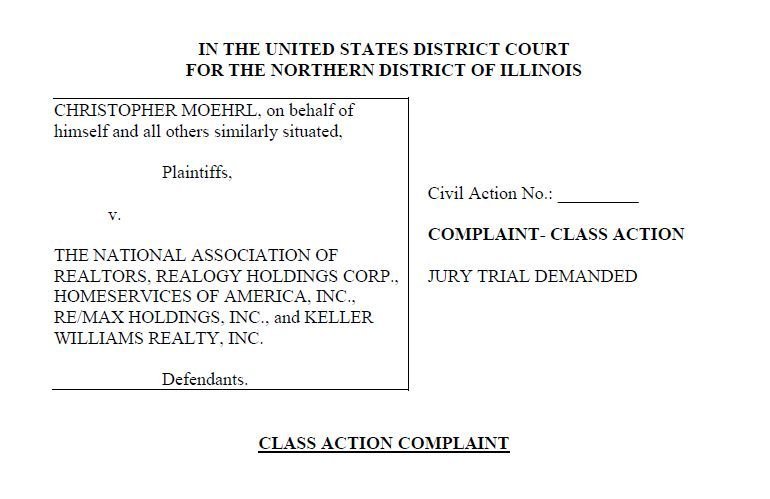Archer-Daniels-Midland Class Action Lawsuit: Your Legal Roadmap
Archer-Daniels-Midland Class Action Lawsuit: Your Legal Roadmap
Blog Article
Comprehending Course Action Legal Actions: A Comprehensive Overview
Course action claims have actually become progressively common in today's legal landscape, shaping the method individuals seek justice versus powerful corporations. In this thorough overview, we will check out the ins and outs of class action claims, including the kinds of instances that can be gone after, the steps involved in filing a suit, and the benefits and disadvantages of going after cumulative lawful activity.
What Is a Class Activity Suit?
A class action lawsuit is a legal action in which a team of individuals collectively brings an insurance claim versus a defendant or offenders for comparable injury or misdeed. This kind of suit allows a multitude of people that have actually experienced a comparable injury to join pressures and go after lawsuit together, instead of submitting individual claims. Class action claims are generally made use of in situations where the harm or wrongdoing impacts a big group of people, such as item responsibility instances, ecological air pollution situations, or instances entailing customer fraudulence.

In order for a legal action to be certified as a course action, certain needs need to be fulfilled. These demands typically consist of numerosity (a a great deal of possible course participants), commonality (typical concerns of legislation or truth), typicality (the cases of the depictive parties are typical of the class), and competence of depiction (the representative events will fairly and effectively protect the passions of the class) Once a course action suit is licensed, notice is given to potential class members, that after that have the option to join the claim or opt-out if they desire to seek their very own private claims.
Kinds Of Class Activity Suits
There are numerous classifications of course action suits that include a large range of legal issues and industries. One common kind is customer course actions, which include claims made by a team of consumers versus a company for false advertising and marketing, malfunctioning items, or unfair organization practices. These claims usually seek settlement for the affected consumers and look for to hold the firm answerable for its activities.
One more classification is safeties class actions, which are brought by investors against a firm for alleged protections scams. BioVie class action lawsuit. These suits usually include insurance claims of misleading declarations or omissions in the firm's monetary declarations or disclosures, which created the investors to endure financial losses
Employment course actions are additionally common, involving insurance claims made by a team of staff members against their employer for offenses of labor laws, such as discrimination, wage and hour infractions, or wrongful discontinuation. These lawsuits seek to safeguard the rights of employees and ensure fair therapy in the office.

Actions Involved in Declaring a Course Action Legal Action
Class action suits need a particular collection of actions to be adhered to in order to efficiently initiate the lawful procedure. The initial step is to identify the prospective class participants who have similar insurance claims or complaints against the offender. This includes carrying out complete research and event proof to support the claims. As soon as the class members are identified, the following action is to select a lead plaintiff or course rep who will act upon part of the whole class. The lead plaintiff will function closely with a skilled attorney that specializes in class action suits.
After the lead plaintiff is appointed, the next step is to file a complaint with the court. The complaint describes the accusations versus the alleviation and the offender sought by the course. It is vital to guarantee that the problem fulfills all the legal demands and plainly specifies the insurance claims of the class participants.
As soon as the problem is submitted, the court will certainly examine it and identify if it satisfies the required standards to proceed as a class activity lawsuit. If the court approves the course certification, notice will be sent out to all potential course members educating them concerning the lawsuit and their rights to participate or opt-out.
Complying with the class qualification, the instance will certainly continue with the discovery stage, where both celebrations exchange appropriate details and proof. This might include depositions, interrogatories, and document demands.
Advantages and Downsides of Class Activity Lawsuits
One of the crucial benefits and negative aspects of seeking a class action legal action lies in its prospective to offer collective resolution for a team of people with similar insurance claims against an offender. The key advantage of a course activity legal action is that it allows individuals with small insurance claims to sign up with together and take on an effective defendant.
However, there are also downsides to class action lawsuits. Since the lead plaintiff represents the whole class, there is a threat that their interests might not line up with those of all course participants. In some cases, the damages granted in a class action suit may be divided among a huge number of course participants, resulting in relatively little compensation for each person.
Recent Spots Course Action Suit Instances
In the last few years, several significant class activity lawsuit cases have emerged, setting criteria and shaping the landscape of collective lawsuit. These landmark situations have highlighted different concerns and resulted in considerable settlements, highlighting the power of course activity legal actions in looking for justice and holding companies answerable.
One remarkable instance is the Volkswagen "Dieselgate" detraction, where the car manufacturer admitted to mounting software in their cars to rip off on emissions tests. This instance led to a class action suit filed by afflicted consumers, causing a $14.7 billion settlement. This spots case not only highlighted company deception but likewise accentuated the ecological effect of such actions.
Thousands of lawsuits were submitted against the firm, affirming that their talc-based products created ovarian cancer cells and mesothelioma cancer. These cases resulted in significant court judgments, with the greatest being $4.7 billion.
Additionally, the opioid crisis has actually also caused many course action suits. Drug drug stores, representatives, and companies have dealt with lawful action for their alleged function in sustaining the epidemic. These cases aim to hold these entities accountable for their activities and seek compensation for the neighborhoods influenced by the situation.
These current spots situations show the value of course action legal actions in attending to company misdeed and supplying justice for afflicted individuals. They serve as a reminder of the power of cumulative lawsuit in holding effective entities accountable and seeking reasonable compensation for those damaged.
Conclusion
Finally, class action claims supply an opportunity for people to look for justice and payment for prevalent injury brought on by an accused. While they have their advantages, such as efficiency and cost-effectiveness, there are also drawbacks, such as prospective delays and limited individual control (BioVie class action lawsuit). Current site situations have shown the significance of course activity legal actions in resolving various problems, highlighting the relevance of this lawful device in guaranteeing accessibility to justice for a lot of people
These needs normally consist of numerosity (a big number of prospective class participants), commonality (common inquiries of law or reality), typicality (the claims of the representative events are typical of the course), and competence of depiction (the agent celebrations will relatively and properly secure the interests of the class) When a course activity lawsuit is accredited, notification is provided to possible class members, that after that have the choice Archer-Daniels-Midland class action lawsuit to sign up with the legal action or opt-out if they wish to seek their very own private cases.
When the class participants are determined, the next step is to designate a lead complainant or class rep who will certainly act on part of the whole course. Because the lead complainant stands for the whole class, there is a danger that their rate of interests may not line up with those of all class participants. In some instances, the damages granted in a class action suit may be divided among a large number of course participants, resulting in relatively small compensation for each person.
Report this page